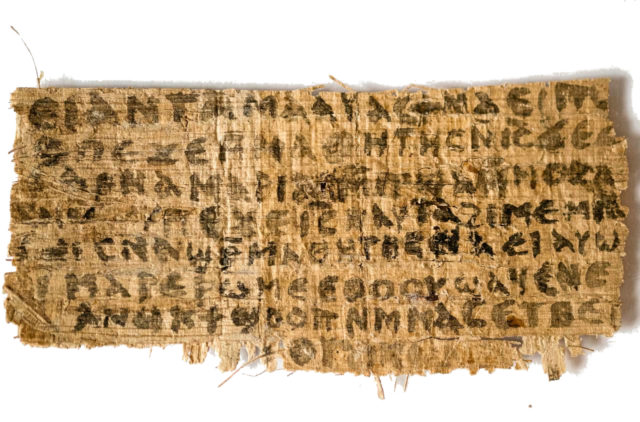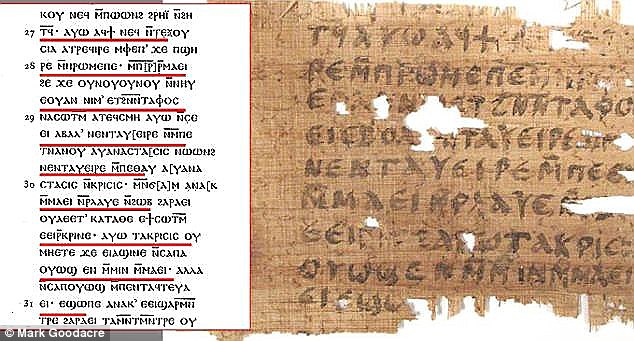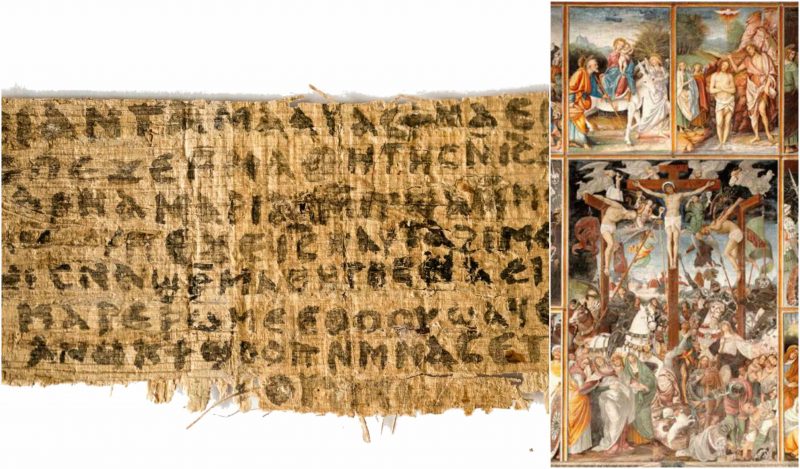Historians today have to be careful to determine which sources are believable and which ones are merely fakes or myths. That being said, ancient documents are the only thing historians can rely on to study what happened hundreds and thousands of years ago.
One Harvard historian recently denounced the authenticity of an old piece of torn papyrus that is known as “The Gospel of Jesus’s Wife”, which they had previously stated to be authentic. The writing on this papyrus suggests that Christ was actually married.

Why did the professor, Karen King, change her mind? Because the man who gave her the papyrus has now officially stepped forward as well. This man, Walter Fritz, only has a small amount of expertise in Egyptology. He was more focused on his auto parts business and pornography. Doesn’t sound legitimate, right?
King teaches Ecclesiastical History at Harvard and has recently reached the conclusion that the piece of document is tilted more towards forgery than being real. She stepped forward to admit she was wrong after reading The Atlantic’s investigation into the papyrus’ origins.
Up until then, Fritz had been unknown and was the official piece of the puzzle to determine whether the document he had was fake or real. This papyrus was studied for almost four years.

Source: Mark Gooadcre
The papyrus is only the size of a business card and is written in ancient Coptic writing. If this small document had actually been real, then it would threaten the entire thought and teachings of the Church. What happens if Christ had been married? What would happen to the churches and gospels they are teaching?
How did this even come to light that it could possibly be a fake? Fritz had actually written to a journalist at The Atlantic, telling them that he was once the owner of the papyrus before King took ownership.
Fritz had confessed that he was the only owner of the papyrus before it was given to King. The owners before him apparently did not tamper with the papyrus and believed that the document was authentic.
When King received the papyrus back in 2011, it came with a photocopy of signed sales contract that an anonymous person had bought it from a man named Hans Ulrich Laukamp on November 12, 1999. Along with the document was a handwritten note that stated that the papyrus was acquired in 1963 by a seller in Potsdam, East Germany.
Fritz claims that it was all legitimate. He did, in fact, acquire the papyrus from Laukamp when he first met him in Berlin in the 1990s. He had met the man at a presentation by the author Erich von Daniken, who was known for his theories about aliens.
Fritz was interested in becoming a priest when he was young. He had bought the papyrus collection in Florida in 1999 and had it in storage for ten years.
During a business trip to London, Fritz met an art dealer who had wanted to buy the papers for $50,000, about ten times what Fritz believed they were worth. Before making a deal, Fritz had contacted King, whose articles on Christianity piqued his interest. He had contacted her, too, because he wanted to know why this dealer wanted to offer such a high price for these documents.
Strangely, the art dealer withdrew his offer after he found out that Fritz had spoken to King. After that, Fritz gave the documents to King.

Laukamp was the owner of a tool company named the American Corporation for Milling and Boreworks. He had two factories – one in Berlin and one in Florida. His business associate happened to be Fritz, a consultant for the United States branch.
Fritz ended up dabbling in other interests. Before King announced the papyrus find, Fritz had made a website called www.gospelofjesuswife.com. This linked Fritz to the papyrus. After digging a little deeper into Fritz’s personal life, it was found that he had made several pornographic websites.
In fact, it was so detailed that it showed his wife having sex with other men. He and his wife got into the business, making tons of fans along the way. Because the papyrus became a national interest, his websites have been since taken down.
Back in 1995, Fritz had established a company called Nefer Art. In Egyptian, nefer means beauty.
Investigations on Fritz revealed there was a Walter Fritz. In 1991, this man had published a German article that talked about the Ancient Egyptian culture and had talked about how he decoded an ancient Egyptian tablet. In the journal, it showed he was part of the Egyptology institute at Berlin’s Free University and that he had also employed a man named Peter Munro.
Fritz told investigators that he also went to the university, but ended up dropping out of the program. However, his interest in the subject remained. He became a tour guide at Berlin’s Egyptian Museum.
Munro’s name was also mentioned in the papyrus package that was given to King. Munro died in 2006, but his analysis on the papyrus done in 1982 suggested that the papyrus is authentic and meant Jesus could have possibly have had a wife.
Interestingly, when Fritz was asked about Munro, he refused to go into any detail about the man’s comments about the papyrus. He claimed he had only received part of that document as a photocopy when it was passed to him, not knowing anything about Munro.
After Laukamp’s death in 2002, his lawyer and his stepson tried arguing that the papyrus had never been his. He actually insisted that Laukamp had never collected antiques. During the time of the sale of papyrus in 1963, Laukamp had been living in West Berlin.
At that time, West Germans weren’t allowed to visit East Germany apart from visiting family. If he had make such a trip it could have involved imprisonment or execution, especially if he was discovered holding a document with cryptic writing.
The question is, how did Laukamp’s signature end up on the sales contract for the papyrus? Laukamp’s wife insists that all Fritz had to tell Laukamp was that he needed his signature for business documents for his company. Fritz still claims that he hadn’t forged the documents. For now, the history behind the document will continue to be a mystery.
